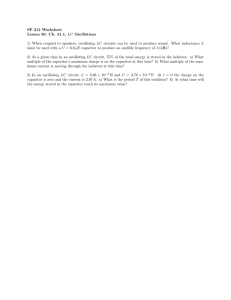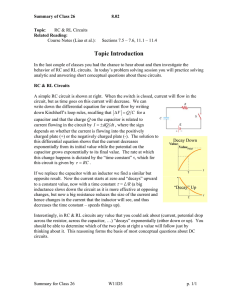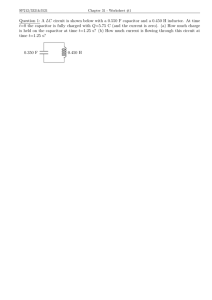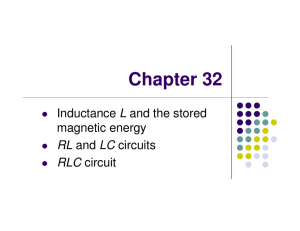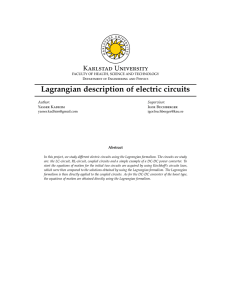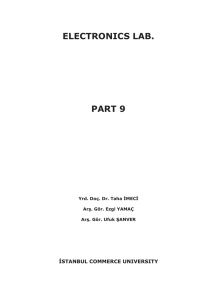PHYS 222 Worksheet 22 RL and LC Circuits
advertisement
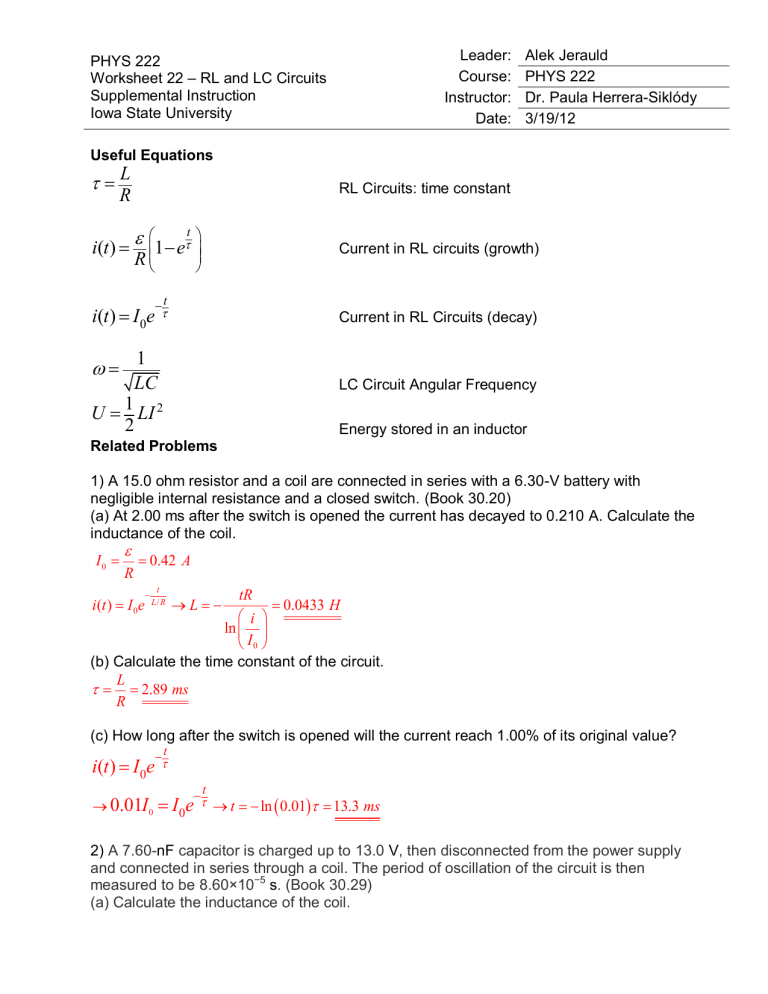
Leader: Course: Instructor: Date: PHYS 222 Worksheet 22 – RL and LC Circuits Supplemental Instruction Iowa State University Alek Jerauld PHYS 222 Dr. Paula Herrera-Siklódy 3/19/12 Useful Equations L R i(t ) RL Circuits: time constant 1 et R i(t ) I0e t Current in RL circuits (growth) Current in RL Circuits (decay) 1 LC LC Circuit Angular Frequency 1 U LI 2 2 Energy stored in an inductor Related Problems 1) A 15.0 ohm resistor and a coil are connected in series with a 6.30-V battery with negligible internal resistance and a closed switch. (Book 30.20) (a) At 2.00 ms after the switch is opened the current has decayed to 0.210 A. Calculate the inductance of the coil. I0 0.42 A R t L/ R tR 0.0433 H i ln I0 (b) Calculate the time constant of the circuit. L 2.89 ms R i(t ) I 0e L (c) How long after the switch is opened will the current reach 1.00% of its original value? i(t ) I0e 0.01I 0 t t I0e t ln 0.01 13.3 ms 2) A 7.60-nF capacitor is charged up to 13.0 V, then disconnected from the power supply and connected in series through a coil. The period of oscillation of the circuit is then measured to be 8.60×10−5 s. (Book 30.29) (a) Calculate the inductance of the coil. 1 LC 2 T 2 1 T2 L 2 0.0247 H T 4 C LC (b) Calculate the maximum charge on the capacitor. Max charge occurs when voltage across capacitor is max, with means all the energy is stored in the capacitor: Q CV 9.88(108 ) C (c) Calculate the total energy of the circuit. CV 2 U 6.42(107 ) J 2 (d) Calculate the maximum current in the circuit. LI 2 max CV 2 CV 2 U max I max 7.22(103 ) A 2 2 L 3) An LC circuit containing an 86.0-mH inductor and a 1.50-nF capacitor oscillates with a maximum current of 0.760 A. (Book 30.33) (a) Calculate the maximum charge on the capacitor. LI 2 max Q 2 U max Qmax I max LC 8.63(106 ) C 2 2C (b) Calculate the oscillation frequency of the circuit. 1 f 1.4(104 ) Hz 2 2 LC (c) Assuming the capacitor had its maximum charge at time t= 0, calculate the energy stored in the inductor after 2.45 ms of oscillation. LI 2 U max 2 t I I max sin(t ) I max sin LC 2 U max LI 2 t max sin 0.0189 J 2 LC


